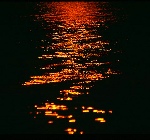The best travel camera
What kind of camera do you need to shoot great travel photos?
Again, all depends on what you want to do with it!
Just about any camera can produce great pictures.
After all, it’s you who takes the picture not the camera!
A badly composed picture taken with a pro camera will always be inferior than a great shot taken with a simple point and shoot model.
The pictures on my site have been taken with quite a few different makes and models: the images from India were taken with a Minolta Dynax 7000i which is anything but state of the art.
Still, I often use this camera as a second body even nowadays.
Later, I bought a Dynax 7xi which had much more features, but is not quite as light and reliable.
My current camera is a Dynax 9 - quite heavy and expensive, but it gives me easy control over every aspect of photography (for example, I switch off the autofocus most of the time...).
On the other hand, the pictures from Germany were mostly taken with a small Rollei point and shoot, some images from South-East Asia with a very small Minolta (died of salt water exposure on a boat) and the “hells” in Beppu in my Japan section were actually shot with a disposable camera. The quality of the prints is quite acceptable, - the scans do not quite do them justice (I’ll have to rescan them sometime...).
SLR or point-and-shoot?
True, a point-and-shoot has some limitations: you cannot change lenses, so it is less adaptable. When I want to take pictures of birds or wildlife, I need my strong tele lens - the Rollei just couldn’t take anything that requires more than 135 mm focal length.
When I want to take pictures in low light, the 50 mm 1:1.4 lens allows me to do this without flash or fast film, - again the much smaller lens of my Rollei couldn’t cope with that.
SLR cameras also are great tools if you want to learn all the basics of photography from scratch.
If you do not intend to manually interfere with its program and mostly use one zoom lens, however, the results will be remarkably similar to a point-and-shoot.
Speaking of available light photography: some fully automatic cameras insist on using a flash even when it is not necessary (this will quickly bring you into trouble in many churches or museums), but are not able to give you a fill flash when their electronic detects enough light.
By the way: we take many abbreviations for granted. For those who care: “SLR” means “Single Lens Reflex”. An SLR camera lets you see exactly the same image that ends up on the film by virtue of a mirror that is quickly rotated out of the way during the actual exposure.
Traditional point-and-shoot cameras may sometimes show you a slightly different image in the viewfinder which may make you wonder why you cut off a person’s toes or why you included that ugly lamp pole. With most modern models this is not a real problem though.
Digital cameras usually have a display that shows you exactly the picture you get without a mirror.
Quality Matters
And, yes, when projected on a big canvas, there is a noticeable difference in sharpness and brilliance.
This, however is due to the fact that I also spent a considerable amount of money on high-quality lenses. Nowadays, most point-and-shoot cameras have decent lenses.
Conversely, the lenses that come packed with your SLR camera do not have to be optically superior, just because they are bigger (although they usually will be “faster” letting through more light).
If you are prepared to spend much money on a camera body, make sure that you get at least one good zoom lens with it - rather than several bad ones.
On the other hand, how many pictures does one miss simply, because the heavy camera equipment is sitting in a cupboard at home?
A smaller camera (traditional or digital) definitely has its advantages, especially when travelling! (That’s why I have my small Rollei, by the way)
Also, there’s the safety aspect: in many countries, big cameras advertise that you are a rich tourist. The point-and-shoot in your pocket only does so (to a lesser extent) when used.
And: do you want to use slides or make giant enlargements of your images?
If not, a simple point and shoot will usually be sufficient for normal prints and today’s digital cameras will always be good enough to show your works on the net, your own computer monitor or a TV!
So, even if you opt for a big SLR equipment, you might consider buying another small camera for your pocket.
Questions to ask
Before buying a new camera, the questions I’d ask myself would be:
What are my main interests in photography (e.g. SLR cameras with exchangeable lenses may be better for wildlife photography or macro photography...)
What kind of output do I need? Is this my main camera or just an additional one? Will I need the camera in low light conditions? Do I want to trust the auto focus and the automatic exposure or do I want to influence this?
Can I suppress the flash and use a fill flash?
Very important: try a new camera in the shop. Does it fit your hand size? (A camera can be too small!). Is it too heavy for you to take on a long trip? Can you easily reach the functions you most often need?
Even better than a dry run: a good shop may permit you to try it out for a few hours or even days. In this case, you can even judge the results before taking the decision.

